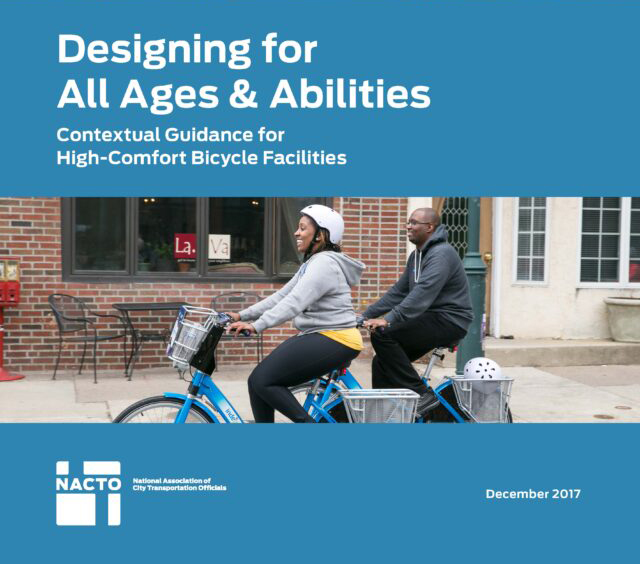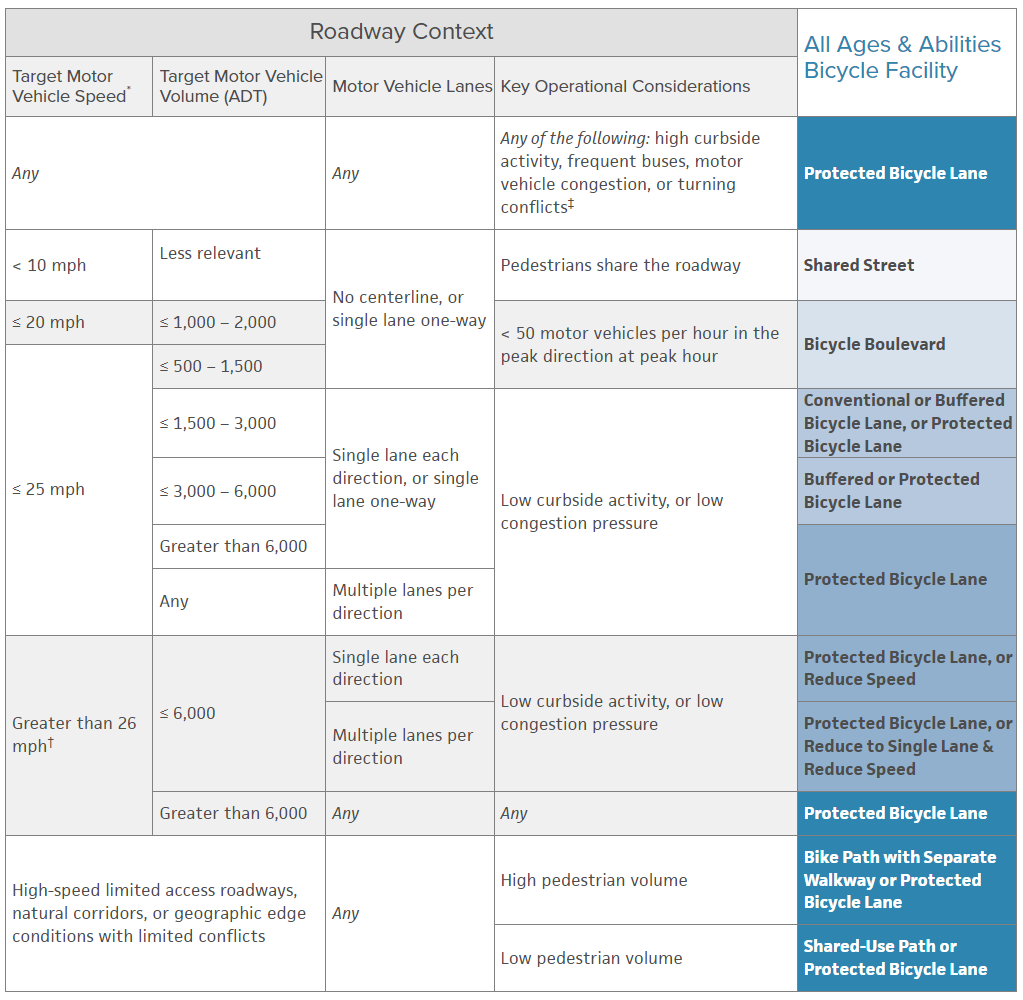Countywide Bikeways Facilities should incorporate All Ages and Abilities (AAA) design principles defined in the National Association of City Transportation Officials (NACTO) Contextual Guidance for Selecting All Ages and Abilities Bikeways.
- Bike lanes (Class II) and shared lanes (Class III bicycle boulevards) should demonstrate the appropriateness (vehicle speed and volume requirements) of the facility to meet the AAA standard.
- Shared-use paths (Class I) or separated bikeways (Class IV) achieve this standard on any roadway, even major arterials with higher volumes and speeds.
- On some corridors, a single street may not be able to best serve all modes, but a set of parallel facilities together (e.g. a transit priority street and parallel AAA bikeway) can provide strong multimodal travel options.
The guidance below provides additional support in identifying strategies for selecting AAA facilities. Two white papers on phasing and implementation provide additional guidance on bikeway facility selection, implementation strategies, and materials.
Bikeway Facility Selection
The NACTO Contextual Guidance for Selecting All Ages and Abilities (AAA) Bikeways facility selection chart provides a starting point for designing AAA bikeways. Designers should review the existing vehicle speeds, volumes, number of lanes, and operational characteristics of the corridor while selecting an AAA bikeway. In many contexts in Alameda County, separated bike lanes or shared use paths should be the most appropriate facility type to create a safe and comfortable environment for children, families, older adults, and people with disabilities. Within this guidance, any of the following conditions suggest a separated (Class IV) bikeway or shared-use path (Class I):- Prevailing speeds at or above 26 mph
- Multiple travel lanes in each direction
- Average daily traffic above 6,000
- High curbside activity
- Frequent buses
- Motor vehicle congestion pressure
- High numbers of turning conflicts




